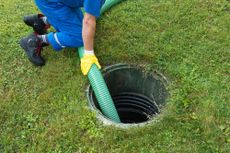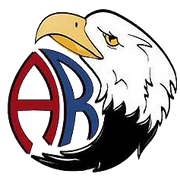
Because most people are accustomed to living in houses that are connected to a municipal sewer system, they don’t understand how a private septic system works or how to maintain one. If you’re a homeowner who has a septic system on your property, you’ll need to prioritize septic tank cleaning and maintenance. Here’s what you should know.
What’s the Purpose of a Septic System?
The septic system is an on-site sewage treatment plant that is necessary if your home has no connection to a city or municipal sewer line. It collects wastewater, rather than disposing of it to the surrounding environment. Without a septic system, sewage is left outside to fester and cause pollution. That’s because it contains toxic disease-causing bacteria like E.coli and salmonella, which can contaminate the ground and nearby water sources.
 However, the trouble doesn’t stop there. Wastewater has high levels of organic matter, nitrogen, and phosphates, which promote algal growth. Not only will these harm the environment, but they can also destroy the ecosystem. By keeping wastes in and out of nature, septic systems protect the environment.
However, the trouble doesn’t stop there. Wastewater has high levels of organic matter, nitrogen, and phosphates, which promote algal growth. Not only will these harm the environment, but they can also destroy the ecosystem. By keeping wastes in and out of nature, septic systems protect the environment.
What Are the Main Components?
Septic systems have two essential parts: the tank and the drainfield.
The septic tank should be large enough to accommodate your home’s wastewater. They are made from concrete, fiberglass, plastic, or steel and usually designed to have two compartments. However, the most basic type has only one section for storing sewage. Since it fills up, regular pumping and septic tank cleaning, at least every three to five years, are necessary to prevent overflows and premature failure. A properly maintained underground septic tank can last for 20 years before it corrodes or cracks.
Also known as the leach field, the drainfield is comprised of several perforated pipes buried underground. It is the section of the system that carries greywater back to the soil, where bacteria break down any remaining wastes in the water. The pipes must be placed far from the aquifer or groundwater to prevent contamination.
How Do the Parts Work Together?
The main drain pipe of your house is connected directly to the tank. Once sewage gets into the septic tank through the inlet baffle, it separates the matter—solid wastes sink to the bottom and become sludge, while oil and grease float up to form the scum layer atop the effluent.
When new wastewater comes in, it displaces the remaining water inside, which flows out of the tank via the outlet baffle. It then reaches the distribution box and the drainfield, where it’s absorbed and filtered.
Learn more about septic systems from the professionals at American Rooter in Watertown, CT. For nearly 40 years, they’ve provided septic tank cleaning, drain repair, and pipelining services to homes and businesses throughout Litchfield County. Call (888) 863-4638 to schedule emergency services like repairs or septic tank cleaning, and check out their special offers online.
About the Business
Have a question? Ask the experts!
Send your question

